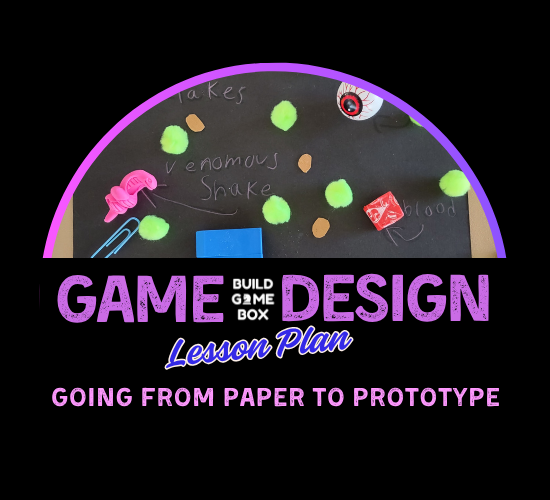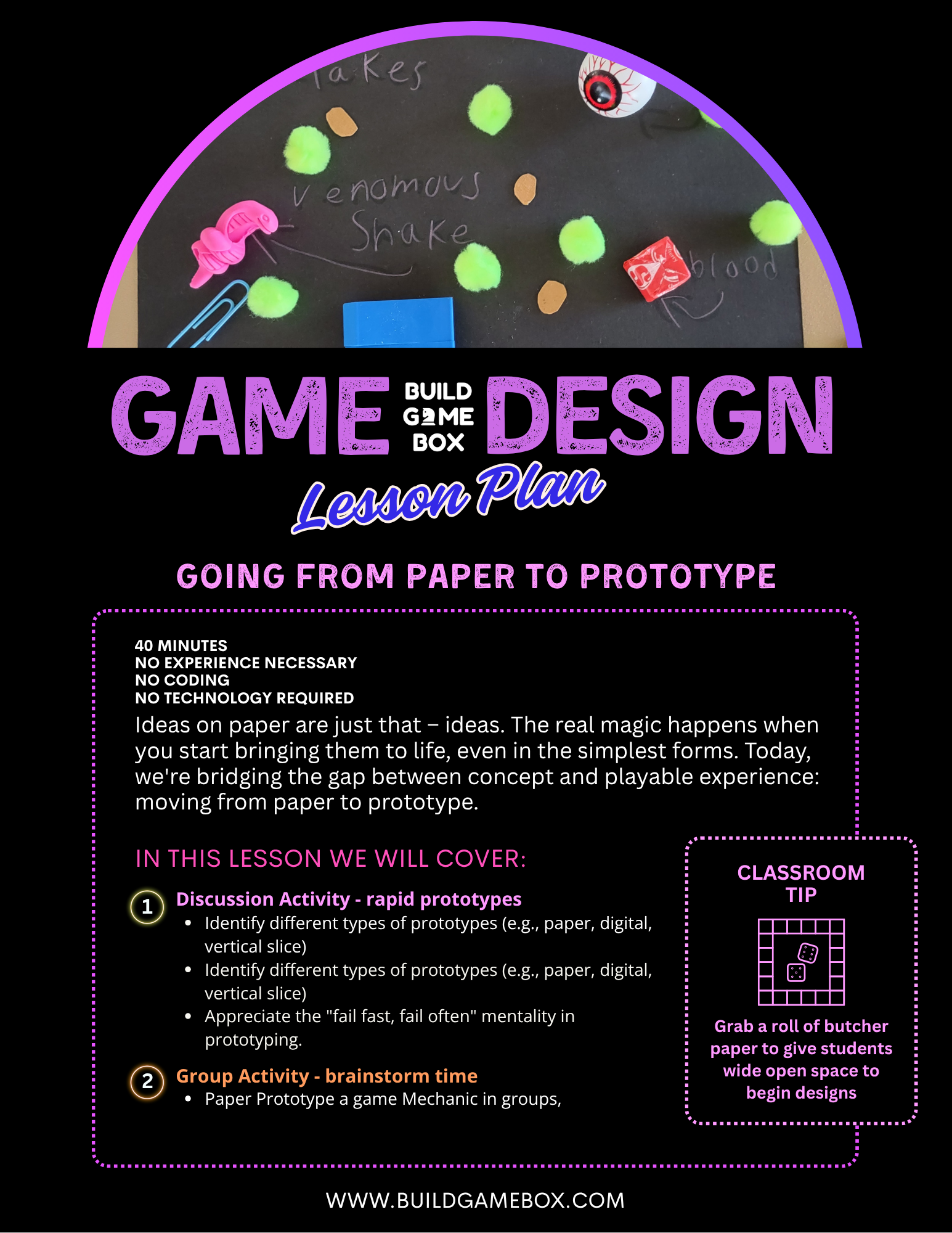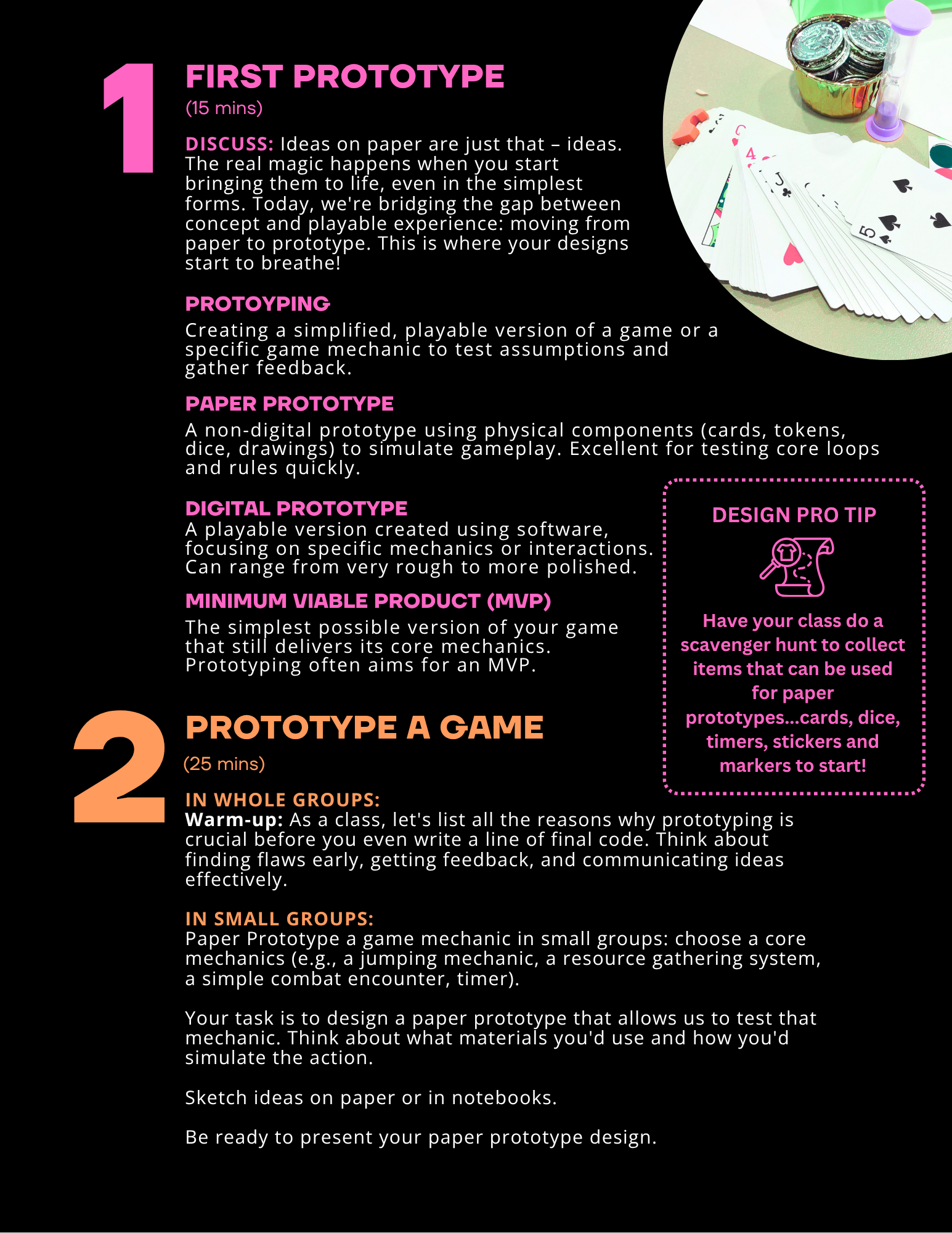Going from Paper to Prototype in Games
Ideas on paper are just that – ideas. The real magic happens when you start bringing them to life, even in the simplest forms. In this lesson, we're bridging the gap between concept and playable experience: moving from paper to prototype. This is where your designs start to breathe!
Learning Objectives
By the end of this lesson, you should be able to:
- Understand the purpose and value of prototyping in game development.
- Identify different types of prototypes (e.g., paper, digital, vertical slice).
- Learn best practices for rapid prototyping and iteration.
- Translate core game mechanics from conceptual ideas into tangible, testable forms.
- Appreciate the "fail fast, fail often" mentality in prototyping.
Key Concepts
Prototyping: Creating a simplified, playable version of a game or a specific game mechanic to test assumptions and gather feedback.
Paper Prototype: A non-digital prototype using physical components (cards, tokens, dice, drawings) to simulate gameplay. Excellent for testing core loops and rules quickly.
Digital Prototype: A playable version created using software, focusing on specific mechanics or interactions. Can range from very rough to more polished.
Minimum Viable Product (MVP): The simplest possible version of your game that still delivers its core value proposition. Prototyping often aims for an MVP.
Iteration: The cyclical process of designing, building, testing, and refining. Prototyping is central to this.
Playtesting: Observing players interacting with your prototype to identify issues and gather feedback.
Scope Management: Keeping prototypes focused on testing specific questions, rather than building a full game.
Activities
Discussion Starter: Why Prototype? As a class, let's list all the reasons why prototyping is crucial before you even write a line of final code. Think about finding flaws early, getting feedback, and communicating ideas effectively.
Class Activity: Paper Prototype Showcase I'll show some examples of simple paper prototypes (e.g., a card game, a board game mechanic). We'll discuss what specific questions each prototype is designed to answer and how it achieves that.
Group Design Challenge: Paper Prototype a Mechanic In your groups, choose one of the core mechanics we discussed last week (e.g., a jumping mechanic, a resource gathering system, a simple combat encounter). Your task is to design a paper prototype that allows us to test that mechanic. Think about what materials you'd use and how you'd simulate the action. Be ready to present your design.
Discussion: "Fail Fast" Mentality What does "fail fast, fail often" mean in the context of prototyping? Why is it a good thing for game development, and what are the dangers of not embracing this philosophy?
Homework
Build a Paper Prototype: Take one of your game ideas (or a new simple one) and create a functional paper prototype. It should be playable by at least two people. Document your prototype (photos/video) and write a brief (200-300 words) explanation of what core mechanic/loop it tests and what you learned from playing it yourself.
Further Reading: Read "Game Design Workshop" by Tracy Fullerton (Chapter 10: "Prototyping").
Further Watching: Search for GDC talks on "rapid prototyping" or "paper prototyping." Many designers share their early development processes.
Conclusion
Prototyping is your secret weapon. It allows you to test your riskiest assumptions, find the fun, and discover the flaws before you've invested hundreds of hours into development. Embrace the messiness, embrace the rapid iteration, and always remember: the goal of a prototype isn't to be perfect, it's to answer a question. Next up, we'll talk about how to keep players coming back for more with engaging loops!


